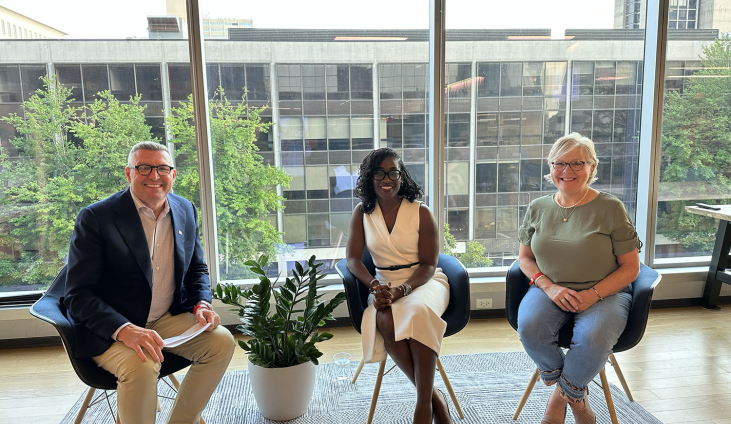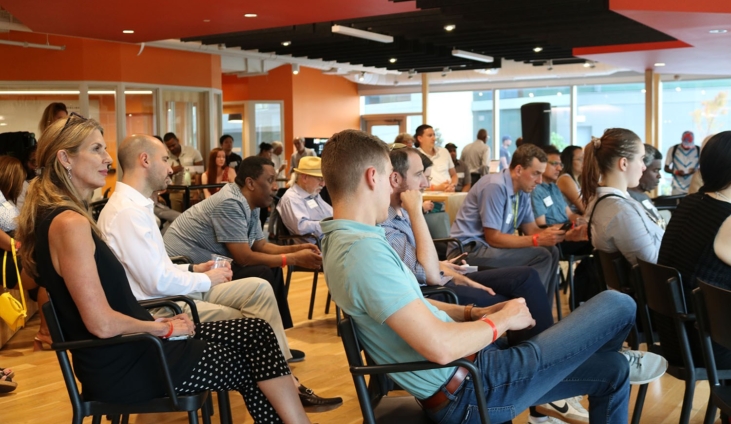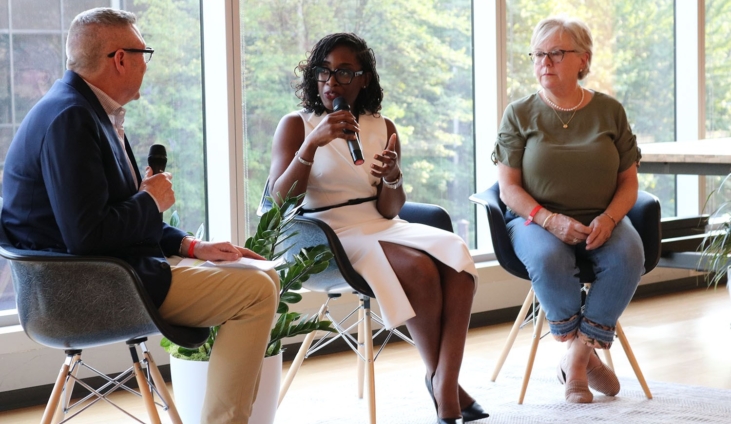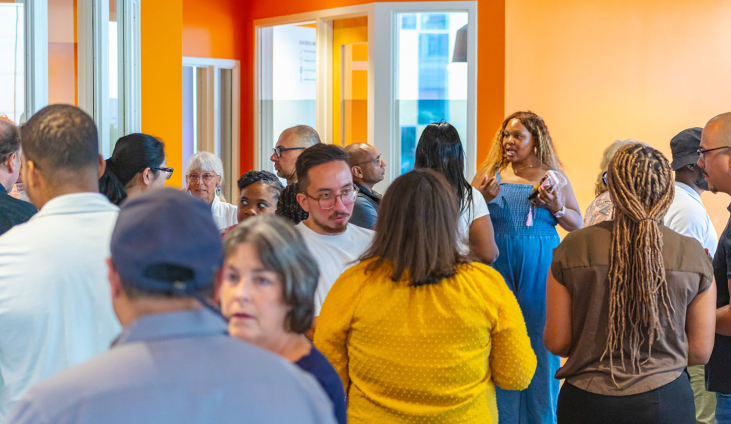During my time as an emergency physician, I saw this far too often. Philadelphia is ground zero, with the dubious distinction of being the poorest ‘big city’ in the U.S. as nearly 23% of the population lives in poverty. Patients who get admitted to an emergency room believe there is no other option and often feel like the system wasn’t built for them. Many times, that is true.
In the middle of a busy shift, it is difficult to get to the root cause of a patient’s discomfort and understand their full medical history. Factors beyond their control – like access to quality nutrition – are often overlooked during the inpatient experience.
On July 27th, during a Venture Café Philadelphia session, I sat down with two local healthcare leaders – Seun Ross, executive director health equity at Independence Blue Cross and Sandra Gomberg, retired hospital CEO and general manager at the University City Science Center – to figure out what we can all do to change this narrative. It was an opportunity to be transparent and open the floor to questions from the tech and entrepreneurial community, an important stakeholder that may hold the key to improving healthcare equity.
Representing both the “payer” (i.e. insurance carrier) and “provider” (i.e. hospital or healthcare facility) side of the equation, along with my experience in healthcare policy-focused advisory roles, we did reach common ground on a few issues. This isn’t always the case in the industry, with competing priorities and a system that is siloed. Here were the key takeaways:
- We need to embrace technology and find better ways to treat patients beyond the expensive, and resource-taxing endeavor of an emergency room visit. How do we anticipate the needs of the communities healthcare professionals serve and eliminate the need for ER visits in the first place? Using big data to proactively find potential problems, telehealth and at-home services are helping to ensure at-risk patients get the care they need in-between appointments.
- It seems more and more that payers are coming to the table to support programs that level the playing field for underserved populations. That means more funding is on the horizon for innovative programs like food as medicine and benefits that support transportation needs (something that impacts 1 in 5 people in the U.S.).
- Mental health is a bigger issue than we could have ever imagined. More than 1 in 6 adults in the U.S. are depressed or receiving treatment for depression. We need to get control of this problem and start implementing new warning systems. This could be in the form of wellness checks as part of primary care visits or a more integrated model of treating physical and mental health, which are inextricably linked.
- While Philadelphia is flush with hospitals, workforce issues continue to plague the quality of care delivered to patients. We all agree that there are plenty of hospital beds in the city, but not enough nurses, community health leaders, and social workers to support the system. We can overcome this by creating better incentives for healthcare workers, who have been undoubtedly pushed to the limit during the pandemic. (Editor's Note: This is one of the reasons I chose to leave direct patient care. In my new role at the Science Center, I can be more effective at championing the causes that matter most to me in healthcare)
Our collective call to action is that we want the government to play a role in supporting programs that can reduce barriers to care and support the programs, policies, and resources that lead to better health outcomes for individuals and families living below the poverty line. We also need technology leaders, with an outsider’s point of view, to continue pushing the healthcare industry forward. If all of these stakeholders can get on the same page more frequently, the result will be greater operational efficiency and better outcomes for the most vulnerable populations.






